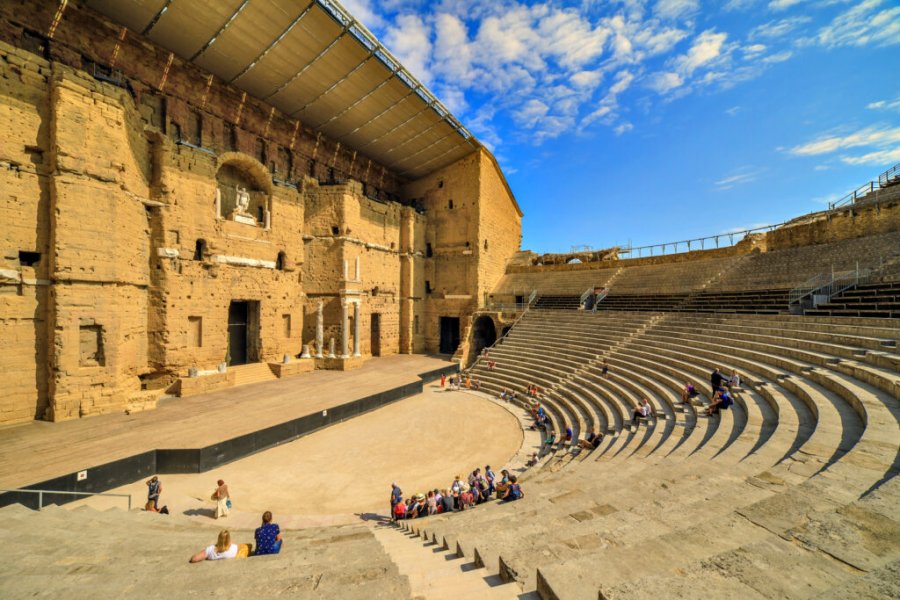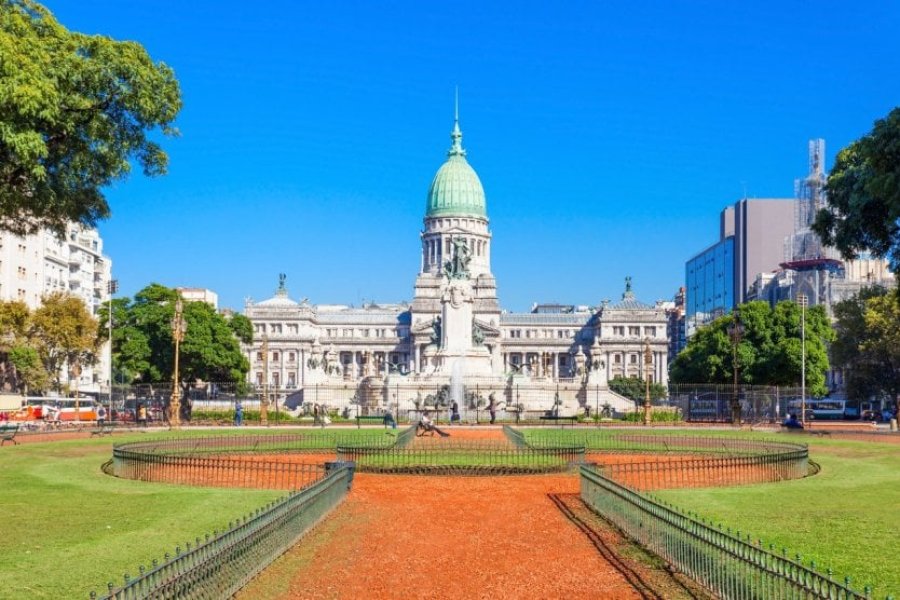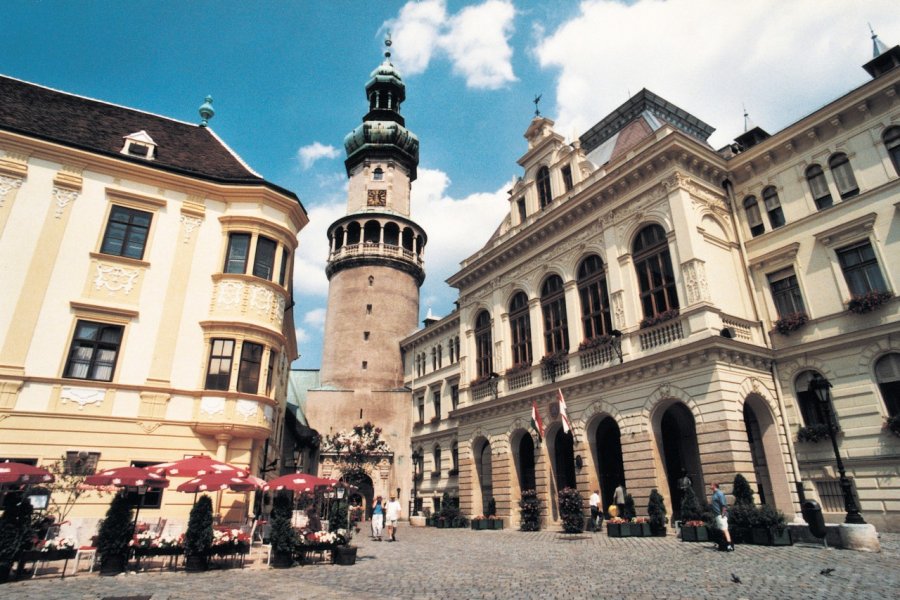Travel Guide Sopron
Find an accommodation
Advertising
Sopron, a small baroque jewel of 59 000 inhabitants, is located 10 km from the Austrian border, 120 km from Lake Balaton and only 60 km from Vienna, Austria. Sopron is nestled in the valley of the small river Ikva, surrounded by green hills. The small streets lead through the slopes of the Lövér (the first peaks to the hills Sopron), named thus by the archers (lövér) which were installed here by King Béla IV, in 1261. Here are the hotels, sanatoria, swimming pools and tennis courts, close to these still green forests. From the Vienna hill (Bécsi domb), Rues or Balf streets, near the th century Repos (Pihenőkereszt), have the best view of the city. The hills around Sopron, on the foothills east of the Alps, are part of the protected national park. Walkers can explore the pine forests of Lövérek in search of the wild scea, a protected plant that grows along the many hiking trails. The road runs through beech forests. Whole fields of reeds surround the smallest expanse of water. The vines bear witness to the millennium work of the men in the region. Sopron is situated between the mountains of the same name and Lake Fertő (Neusiedl in German), in the extreme northwest of La Transdanubie, on the Austrian border, on the ancient route of transcontinental amber, which went from the Baltic to the Adriatic and flows through Byzantine merchants.Miraculously saved by history. The heights around Sopron were already inhabited in prehistoric times. At the beginning of the second century BC, the Illyrians were replaced by the Celts and, from the first century of our era, the Romans occupied that location. The Magyars, in conquering the country, established themselves on the ancient Roman fortifications. Called Scarbantia by the Romans and Ödenburg by the Germans, Sopron (because of his proximity to Vienna) escaped from Mongolian devastation (Huns from the th century, and Tatars from the th century) and the Turkish occupation (in the th and th centuries). This beautiful city is the only one in Hungary whose architectural heritage has been preserved almost intact. In the th century Sopron received Free city status. Thus, an average bourgeoisie of merchants and craftsmen could develop there. Thanks to their wealth and interest in the arts and literature, the city has always experienced great cultural activity. Reputable schools of a high level were founded there. The families of the Esterházy and Széchenyi built palaces and mansions in the area of Sopron, which is still the centre of the culture and economy of Western Hungary. After the first world war, by the Treaty of Trianon, Sopron was annexed to Austria, but following a referendum, in 1921, the city preferred to remain Hungarian.The medieval city centre. Historic monuments, miraculously preserved from the devastation of the past, appear on a small winding street. Remnants of the ancient ramparts suddenly appear in many places. The medieval atmosphere of the city still overlooks the alleys and small squares lined with rows of ancient houses. The houses of «Bohnenzüchter» are those of German peasant farmers, former growers of vines and beans. But what's most attractive to visitors is the old town in the form of a horseshoe shaped behind its protective walls. Indeed, the heart of the city is surrounded, as in a shell, by several circular rows of houses, dating from the th century, and remains of the Roman ramparts, whose foundations are being turned off. It is the medieval town richest in historical monuments throughout Hungary. By taking a look behind the heavy oak portals in the ancient ornamental knockers, we discover internal courtyards for medieval and Renaissance arcades and Warheads. Some facades of a splendid baroque display the family arms carved in stone. Most of these historic buildings are called "museums".
What to visit Sopron?
Advertising
Weather at the moment
Advertising
Organize your trip with our partners Sopron
Transportation
Book your plane tickets
Car Rental
Boat rental
Accommodation & stays
Find a hotel
Holiday rental
Find your campsite
Tailor-made trip
Immersion travel
Services / On site
Activities & visits
Find a doctor













